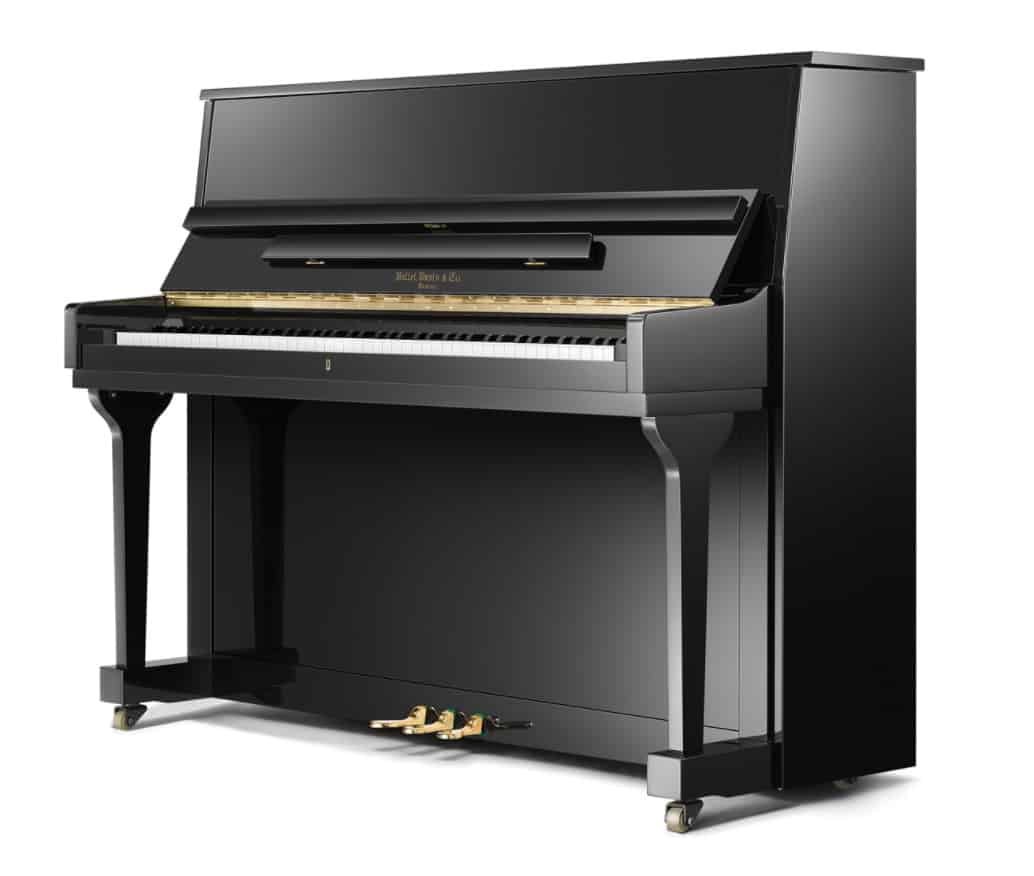
Hallet & Davis pianos may not be a manufacturer that is familiar to pianists in Europe. As a brand they began as many did in the early part of the 19th Century (1835), making pianos in the United States. Originally, the company built its instruments under the joint names of Brown and Hallet, with Mr. Brown retiring from the company in 1843. Boston Massachusetts was the first city where Hallet & Davis began work, establishing a thriving business.
Hallet Davis Piano Review
Ownership of the company changed considerably as the years went on with the company secretary and treasurer, C.C and E.E Conway, assuming control of the business by 1905. This in turn led to the formation of the Conway Piano company that itself transformed into the Continental Piano Company in 1928. Shortly afterward the Aeolian Piano Company purchased the Continental Piano Company partly due to the immense pressures on the business during The Great Depression.
Pianos were manufactured under the Hallet & Davis name right up until the 1980s. China is where Hallet & Davis pianos are now made through the North American Music Corporation but it is in name only that these pianos connect. From all available information, it appears that the HD&C pianos as they are presently referred to are manufactured by the well-respected Pear River Group.
The Hallet & Davis pianos came in the full range, as you might expect from any manufacturer of the time. Grand Pianos, upright or vertical pianos were made in addition to the popular ‘square’ piano and the ‘player piano’. These instruments grew in popularity towards the turn of the century and indeed are still in demand today. There is a certain charm that the player pianos possess that is difficult to fully explain. One such piano was the ‘Virtuolo’ player piano from Hallet & Davis that they manufactured from around 1905 up until 1925.
The ‘Virtuolo’ piano range was thought to be amongst the highest quality of player pianos available at that time and a fully restored one if you are fortunate enough to discover one, would be a great treasure. Like the player pianos, Hallet & Davis enjoyed the reputation for creating pianos of extremely high quality and design. Along with many contemporary piano makers, Hallet & Davis had significant competition from other piano designers and makers, creating the need to produce first-class pianos even stronger. This may be of use to anyone considering renovating one of the older, original Hallet & Davis pianos.
As a small aside, it may be of interest to learn that alongside other historic names, no other than the virtuoso composer, pianist Franz Liszt is thought to have looked favourably on the Hallet & Davis grand pianos. If the stories are to be believed, Liszt performed on a Hallet & Davis piano when attending the Paris Exposition. This must have been a welcome acknowledgment from such an eminent star of the day and gone some way to ensuring the success of the business. Further to this enlightening tale, is that in 1911, Pope Pius the tenth chose a Hallet & Davis piano for the Vatican and also awarded the company a gold medal in ‘recognition of the beautiful qualities of the instrument’.
From the Hallet & Davis website, it is clear that they pride themselves on continuing to produce pianos of quality that embody that alluring mixture of German traditional techniques with the new aspirations of American design. Present models claim to have the best German-made components inside including strings and hammers. Their soundboards are made from ‘spruce wood’ that is often used by many other premium brands and their ‘finely tuned action’ provides a reliably consistent, responsive touch. Different finishes are available as standard across the range to offer the buyer both ‘beauty and value’ in every instrument.
Upright Hallet & Davis pianos are part of the contemporary ‘Signature’ range of instruments. These arrive at the customer in five different versions, each with a credible list of components and design specifications. From the HS109D (43″) to the HS131Y (52″), each has maple pin-blocks and bridges, spruce wood back posts, ‘full direct blow’ action, and a sand cast-iron plate. The strings are German and the soundboard is made of high-quality spruce.
There is a good selection of grand pianos also still made by Hallet & Davis and under the broad title of ‘Signature’. Four models are on offer according to their 2019-2020 catalogue and each looks to be impressively created to give the pianist the best playing experience possible. Models are the HS 148, 160, 170, and 188 with the numbers corresponding to the piano’s length in centimetres. In a similar way to the upright range, the specification that accompanies these grand pianos is suitably impressive and is in line with the likes of some of the most prestigious piano manufacturers. What is often commented upon is not the integral components that comprise the contemporary Hallet & Davis but that they are not ‘handmade’ in the same way as perhaps Steinway & Sons grand pianos are. This claim may be worthy of a closer examination.
An additional consideration for those with a generous budget might be the ‘Imperial Collection’ from Hallet & Davis. These instruments represent the top of the range grand piano experience. Not only are they beautifully responsive instruments with a ‘satisfying’ tone but they are available in a selection of more exotic finishes. These include walnut or mahogany veneers in satin or high lustre polishes. These Imperial pianos are, as far as I can ascertain, by special order only and it appears, could be designed with a bespoke finish to accommodate even the most unusual tastes.
Even though the Hallet & Davis piano is not made under the original umbrella the ideology of the founders seems to remain intact. The reputation of the Hallet & Davis piano is well established and certainly, the older models from the early part of the 20th Century are still instruments of interest. Equally, if a player-piano is where you want to place your money, the Hallet & Davis range, all be it renovated, from the 1920s would be a wonderful investment.

Thank for that detailed explanation.